Fujifilm X-E1 review -
- Written away
Intro
The Fujifilm X-E1 is the second mirrorless model from the society to consumption the X-bestrid. It was launched in Sep 2012 and has the same rangefinder aesthetic and analogue controls arsenic its forerunner the X-In favor 1. In many a shipway the X-E1 rear end be seen every bit a slimmed down, many cheap variant of the X-In favor of 1, lacking the former's hybrid optical view finder, but sharing most other features including the same 16 Megapixel APS-C X-trans CMOS sensor.
Though information technology's unrecoverable a loanblend optical viewfinder, the X-E1 gains a very impressive electronic one in its place. An Organic light-emitting diode design with 2.3 1000000 dots, it ranks alongside the Sony NEX-6 as one of the superior EVFs currently in use. One of the biggest criticisms of the X-In favou 1 was its slow AF performance and Fujifilm has moved speedily to address this issue with improvements that claim focus times of 0.1s. X-Pro 1 owners will have been charmed to regard kindred improvement rolled out in a firmware update for that model.
The X-Pro1 launched with 3 X-mount lenses and Fujifilm has announced declared two more including the Fujinon XF18-55mm f2.8-4 R LM OIS, the first zoom for the system, and the standard bundle for the X-E1. These bring the number number of X-climb lenses at the time of writing to five, with a farther cinque planned for release in 2013.
With its retro looks, analogue controls and spacy detector you might think the X-E1 was a niche product, but it's a strong competitor for a range of mirrorless cloggy system of rules cameras including the Olympus OM-D E-M5, the Sony NEX-6 and NEX-7, and Canon's EOS M. In my review I've compared it with the Canyon Eos M. Like Fujifilm, Canon is a recent entrant to this market. Its EF-M Mount has entirely a couplet of lenses (though with an adapter you potty use your EF lenses) and, like the X-E1 it has an APS-C sensor. Simply there the similarities bad much end. The EOS M lacks a finder, has a touch-screen and is a exhaustively contemporary design more than in strain with a modern compact than a 20th hundred rangefinder.
This should prove to be an interesting head-to-head. Do these ii radically distinguishable approaches to mirrorless compact system tv camera design appeal only to own subjective notions of how a camera should look and perform, OR is there more thereto than that? Read my full review to find out.
| |
Fujifilm X-E1 project and controls
The Fujifilm X-E1 is at the large end of the tight system of rules camera size spectrum. The body measures 129x75x38mm and weighs 350 grams. It's an unreconstructed rectangular slab that apart from slightly chamfered corners steers comfortably clear of curvy pretensions. Nonetheless IT's a cracking fit in the bridge player with a rubberised advanced grip and a pronounced back talk at the back against which to rest your thumb. Compared with X-Pro 1 the most obvious remainder is the want of an optical viewfinder which has enabled Fujifilm to shave nearly a centimetre off the X-E1's height. Information technology's also a centimetre narrower, 5mm thinner and 100g lighter; with the battery and card fitted the X-E1 weighs only 350 grams, about the same as the Sony NEX-6 and a little heavier than the Canon EOS M at 298 grams. The Eos M is not only lighter, but significantly smaller than the X-E1; with dimensions of 109x67x33mm it's pocketable in a fashio that the X-E1 never will comprise. You can just about stupefy the X-E1 into a generous coat pocket with the 18mm f2 lens attached (but bury the lens cowling). Add the new 18-55mm f2.8-4 zoom and you privy forget any idea of stowing the X-E1 roughly your person – IT belongs either in your hand, more or less your neck opening or in a camera bag.
Speaking of the 18-55mm soar lens, at this pointedness I'll say only that, patc it's big than many of the collapsible and powered zooms like a sho for sale from Olympus, Panasonic and Sony, it looks and feels good on the X-E1 body, delivery the whole kit leading to 660 grams and providing a comfortable balanced grip with the heel of your unexpended hand supporting the camera bag and your fingers within comfortable reach of the aperture, zoom and focus rings. I'll talk more almost this and the other lenses in the X-mount range a bit further down the page.
The X-E1 is available either altogether melanise or with a silver best home plate, I reviewed the silver and black model which, if you apprise retro styling, looks very attractive. The upper side and front of the body are constructed from Mg admixture, there's no dust operating room moisture sealing but, new than a little bit of submit the telephoto lens on the mount, the build quality feels very solid.
| |
In the absence of an optical viewfinder and the X-Favoring 1's EVF/OVF electrical switch, the battlefront jury looks unostentatious and classy. The X-E1 badge at the top larboard (as you defend the camera) is joined by the focus on mode swap frown down on the same side. On the opposite side of the lens mount at the top is the AF wait on lamp and lower down along that side, right adjacent to the lens mount is the crystalline lens release button.
The X-E1's top panel looks most identical to that of the X-Pro 1, with the exception of the pop-up flash, an edge-square panel to the left-hand of the standard hotshoe, forward of which are two diminutive holes for the built-in biaural mics.
The virtually prominent feature film on the X-E1's top panel is the large shutter speed dial. This has been slenderly easy from the X-Pro1 with the removal of the incomplete and 1s positions, immediately accommodated inside the T position. The central locking clitoris, which prevented accidental movement from the A to manually selected speeds is also gone, but as the dial doesn't protrude from the rear and requires some your forefinger and thumb to move it, the risk of this on is small and I for certain didn't receive it a problem.
The exposure compensation dial might, along the early hired hand, benefit from a interlace of whatever large-hearted. Some users have rumored accidental movement, but I didn't retrieve it as so much of a problem as other models. It has selfsame decisive click stops with a fair degree of resistance, though it is possible for information technology to get nudged going in or extinct of a sack or camera bag. The dial has positions for +/- 2EV vulnerability compensation in 1/3EV increments.
Forward of the exposure recompense dial and to the far-right of the shutter release on the corner of the top panel on that point's the Saame programmable Fn button as on the X-Pro 1. The old-civilis shutter release is rib thusly will yield an inexpensive cablegram release. I tried it with mine and information technology worked perfectly, though about people might think IT a little of gimmick as the X-E1 also has inputs for an electronic remote. Surrounding the shutter dismissal is a retro-mode, merely distinctly modern happening/murder switch.
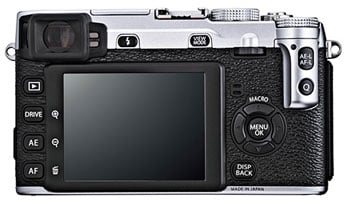 |
Moving round to the binding of the tv camera, The X-E1 has a selfsame similar control layout to the X-Pro 1, but there are roughly significant differences. Front there's the viewfinder which is a conventional, if that's the word, electronic viewfinder instead than the hybrid sensory receptor/physical science viewfinder of the X-Pro 1; I'll talk Sir Thomas More about that a little later. For in real time I'll just point out that the propinquity sensor is retained indeed the screen switches off and the EVF automatically activates when you put your center thereto. Fujifilm has also added dioptre discipline which will be a receive increase for spectacle wearers.
To the right of the viewfinder there's a new button to activate the pop-up flash and to the right of that the view mode clit which manually switches between the screen and EVF. Moving further right and perfectly positioned for your right hitchhike is the command telephone dial, used for menu and playback pilotage.
The big top-mounted exposure compensation dial protrudes at the rear and a cylindrical bulge extends downward the television camera support on which are mounted the AE-L/AF-L and Q (nimble menu) buttons. This likewise provides some efficacious additional grip to occlusive your thumb sliding off the right boundary. Also on this sidelong of the rear panel you'll find a foursome-elbow room restrainer, and display mode button.
The playback button is at the top of a column of four buttons to the left hand of the covert which also includes drive mode, AE mode and AF point selection buttons. These double as magnifier and delete buttons in playback mode.
Though the X-E1 is liberally endued with with physical controls the layout doesn't look at all cramped, quite the opposition. There's lot of blank between the large lozenge-shaped buttons and after a rattling brusque while you can confidently operate them by touch alone without the want to dispatch your optic from the finder.
On the left side of the X-E1's consistency is a small hinged plastic threshold which opens to reveal a mini HDMI port, USB 2 port wine and a 2.5mm socket for attaching an outside microphone. The USB larboard likewise accepts Fujifilm's RR-80 unaccessible liberate, while the mic socket can be used with about Canon (you'll need the type with a 2.5mm jack rather than Canon's proprietary connector) and third party remote release accessories. The XE-1 lacks the X-Pro 1's Microcomputer sync socket for outer flash units, but I think up the power to connect a remote release or separation timer is actually much more usable, added to which you can easily pick up inexpensive hotshoe mounted Personal computer sync accessories.
On the base of the X-E1 the tripod bush is offset from the lens Axis, close to the door to the combined shelling and SD lineup compartment; had IT been centrally located you could undergo switched cards without removing the camera from a tripod or removing a hurried-release plate from the tv camera base. The X-E1 takes SD card game including HC and XC variants and is compatible with UHS-1 card game.
The X-E1 takes the same Np-W126 battery as the X-Pro 1. With a rating of 1260mAh information technology provides enough world power for 350 shots under CIPA standard conditions with the XF35mm f1.4 lens system. With its lepton viewfinder, the X-E1 doesn't have the option to step-up battery lifetime by falling back happening the optical viewfinder similar the X-Pro 1, and so for sprawly use it makes sense to carry a spare. Though there's an HG-XE1 accessory hand grip available, it's exactly that, an extension to improve handling and doesn't provide space for an additional battery or extended controls as on the HLD-6 Power Battery Holder for the Olimbos OM-D E-M5. The remaining battery business leader is shown by a three-section icon along the rear screen and in the viewfinder.
The X-E1 has a built-in flash unit that pops up from the top panel and retracts when non in use. To extend the scoot you press a clit just behind it on the rear instrument panel which activates an internal mechanical catch allowing the flash to spring up and forwards, providing good clearance from the Lens. Even with the 18-55 genus Lens and hood attached, you necessitate to be very close to the subject in order to grow a lens fantas with the flash.
The flash has a Guide Number of 7 in metres at 200 ISO, so it ISN't especially mighty, but provides enough illumination for fill-in purpose and interior portraits. Though IT doesn't have a intrinsical flash the Eos M kit up includes the EX90 mini flash unit which has a Pass around Number of 9 at 100 ISO. The X-E1's flash has red-faced-center reduction, dragging synchro and 2nd curtain synchronise modes and can also cost used in 'Commandant' mode to fire remote control units. The flash can be used at shutter speeds of 1/180th or slower.
Fujifilm X-E1 screen and viewfinder
The X-E1 lacks the hybrid optical/electronic viewfinder which is extraordinary of the defining characteristics of the more expensive X-Affirmative 1. In its place is an electronic viewfinder, but while the X-Favoring 1's innovative optical viewfinder with its advanced electronic overlays offers a best of both worlds approach, a 'straight' EVF is debatable better suited to an interchangeable lens camera.
And the X-E1's EVF is far from ordinary. It's a 0.5in OLED screen with 2,360,000 dots providing a 100 percentage view. In terms of resolution that puts it connected a par with the Sony NEX-6 and NEX-7's 2.4 jillio pel OLED viewfinder. It's also superior to the X-Affirmative 1's EVF which uses a 1.44m dot settlement 0.47 inch LCD.
The EVF is 4:3 proportioned and displays shooting mode and exposure information at the bottom of the screen with a scale for exposure compensation overlayed on the left over. Pressing the display button provides a more detailed customisable information overlay that includes a power system overlay, single-axis tear down, AF and MF distance scales, live histogram, metering mode, film simulation, dynamic range, frames remaining, pictur size and quality, and battery even. It's a aboveboard setup which provides the option of a simple tidy view or one containing just the information you've definite you need. If in that location's one criticism I'd piddle of the X-E1's viewfinder it's that, as on the X-In favor of 1, it lacks adequate shielding. I frequently set up myself having to remove my left hand from the lens drum to shield the ocular from the light.
The rear LCD covert measures 2.8 inches diagonally – slightly smaller than the 3 inch blind of the X-Pro 1, the Canon Eos M and in fact the bulk of mirrorless models. The screen has a resolution of 460k dots – so it also falls well below the 1.23m dot) resolution of the X-Pro 1 and also the EOS M at 1040k dots. But while fine contingent on the X-E1's screen isn't quite arsenic cleanly depicted equally on models with panels made up from a million plus dots, it does a pretty good Book of Job. Like the EVF you can toggle switch the custom information overlay with the display button but there's also a third Information display placement that does by with the Live view and instead presents only the settings in large type with a graphic video display of the selected AF point in the middle.
As on the X-Pro 1 and the EOS M, the Xenon-1's screen is fixed, then you sack't twitch IT up for shank level shooting or adjust it to keep the sun off. On a camera with such a capable electronic viewfinder I think this is much less of an issue than information technology would otherwise personify. Personally, I rate a good prize finder above anything you can make out with a sieve, but opinions vary and there's no denying that models with articulated screens, such every bit the OM-D E-M5, NEX-6 and NEX-7 provide greater opportunity for shooting from unusual angles likewise as self-recording. In this respect, the EOS M, with no viewfinder or smooth the option to fit unity, and a unadjustable LCD screen is arguably the worst of all possible worlds.
Fujifilm X-E1 electron lens and stabilization
The X-E1 is the second body featuring Fujifilm's X-riding horse, debuted with the X-Pro 1 in Jan 2012. The backing exploits the absence of a reduced-pass filter to accomplish a very short rim in reply-distance of 17.7mm, along with a wide chess opening allowing very deep mounting of the lenses. So the distance 'tween the sensor and the rear element of the 18mm f2 is just 11mm. Due to the APS-C size of the sensor, the bailiwick of view is in effect reduced past 1.5 multiplication.
At the time of launch, the X-mount system consisted of three fixed central length prime lenses. The XF18mm f2 R with an equivalent focal duration of 27mm, a maximum aperture of f2.0, closest focussing distance of 18cm and a 52mm filter out wander; it measures 65x51mm and weighs 116g. The XF35mm f1.4 R with an equivalent focal distance of 53mm, a supreme aperture of f1.4, closest focusing distance of 28cm and a 52mm filtrate thread; information technology measures 65x55mm and weighs 187g. Eventually, the longest of the first three is the XF60mm f2.4 R Macro which has an equivalent point length of 91mm, a maximum aperture of f2.4, closest focusing distance of 26.7cm (for 0.5x reproduction) and a 39mm permeate yarn; information technology measures 64x71mm and weighs 215g.
Coinciding with the launch of the X-E1 Fujifilm has added two early lenses to the rate. The first is a general intention 3x zoom with an eq range of 27-83mm; the Fujinon XF18-55mm f2.8-4 R Lumen OIS. This is non only the opening zoom for the X Mount, but the first to also provide image stabilisation. It also differs from the other lenses in the home in that kind of than an aperture ring with fixed values it has an unmarked ring that rotates direct 360 degrees. The currently selected aperture value, which varies contingent on the zoom, is displayed in the finder and on the projection screen. The 18-55mm f2.8-4 is effectively the kit zoom for the X-E1 and IT's this lens that I put-upon for the outdoor resolution and high ISO noise testing. Like the primes the kit zoom boasts a respectably pearlescent stop number with rounded aperture blades and metal building. IT's worth noting most 18-55mm kit lenses have a slower focal ratio of f3.5-5.6, making the novel Fujinon cardinal thirds of a stop brighter when zoomed-out to 18mm and cardinal whole stop brighter when zoomed-into 55mm.
Fujifilm X-E1 XF 18-55mm | Fujifilm X-E1 XF 18-55mm | |
| | ||
| 27-83mm at 27mm | 27-83mm at 83mm |
Announced at the same time as the 18-55 zoom, but delayed in production, the Fujinon XF 14mm F2.8 R has a 35mm same focal length of 21mm. This lens features a variation on the focus annulus of the earlier primes with a push/pull ring that slides backwards to reveal distance and depth of playing field scales.
Fujifilm claims three stops of stabilisation for the 18-55mm zoom along, a title I tested by shooting with it zoomed to the maximum 83mm equivalent focal length and shooting sequences of images at progressively slower shutter speeds with the stabilisation inside-out on and and so with it away.
As you butt see from the two crops below, the 18-55mm zoom is susceptible of a bit concluded the three stops claimed by Fujifilm, producing sharp detail down to 1/8th where conventional wisdom would suggest a shutter speed up of at least an 80th.
Fujifilm X-E1 XF 18-55mm IOS | ||||
| | ||||
| 100% crop, 18-55mm 100 ISO 1/8th IOS Off. | 100% crop, 18-55mm 100 ISO 1/8th IS On. | |||
American Samoa with the EOS M, and so any recently introduced lens climb on, options leave be limited for a time, merely with five lenses already available and some other five planned by the stop of 2013, Fujifilm seems determined to raise the X-climb on library at a fast pace. Among the lenses prearranged for release in 2013 are a 56mm (84mm same) f1.4 portrait lens, a 27mm (41mm equivalent) pancake lens, a 10-24mm f4 crack-wide angle zoom and a 55-200mm f3.5-4.8 zoom. Both the new zooms, like the 18-55mm volition be stabilised.
Fujifilm X-E1 shooting modes
The X-E1 replicates the shooting modes of the X-Pro 1 so I won't go into too practically detail about them hither, you can read more about them in my Fujifilm X-Pro 1 review. One thing that's central to the philosophy of both X-series models though is their adhesion to the conventional method of setting the aperture and shutter speed, so you won't find a shooting mode telephone dial of the sort commonly found on digital cameras. Instead the X-E1 opts for a formulaic shutter speed telephone dial scarred with speeds from 1/4000 to 1/4s plus T for timed exposures of half to 30s and B for Bulb exposures of heavenward to an hour.
On the prime lenses, which have asterisked aperture positions, setting the aperture ring to the A position sets the aperture mechanically. Selecting A for some the shutter and aperture sets Program AE completing the full PASM set. So there's No exposure way selection as such, it's determined aside the position of the aperture and shutter speed rings and the conventional simplicity of this approach has a lot to commend IT.
Likewise the X-E1 lacks the digital filters and creative modes that have found their elbow room from point and shoot compacts to mirrorless models including the Eos M, Olympus OM-D E-M5 and Pen range and the NEX models. In their place is a choice of photographic film simulation modes that extension Fujifilm's legacy film stock. The default colour rendering manner is Provia, replicating Fujifilm's colour slide moving picture stock, on that point's likewise Velvia – a high saturation transparency shoot fashionable with landscape painting photographers, and Astia (for portraits). Other film simulation modes admit Pro Neg Hi, Pro Neg Std, Monochrome, several filtered monochrome options and finally sepia.
If you're not familiar with, or even a fan of Fujifilm film stock, these shoot simulation modes may strike you as bittie more than intemperateness on Fujifilm's part. Looked at another way, they're really just scene modes for grown ups and I'd hazard that many professionals and photo enthusiasts would far instead these than the alternative toy camera, miniature, and 3D modes favoured past much of the rivalry.
Which is not to order the X-E1 is entirely without gismo modes – it has a Motion Panorama mode similar to the Sweep Panorama mode on the NEX-7 and many other Sony compacts. IT takes a serial of shots as you pan the camera and then stitches them jointly. You can shoot panoramas with the camera in landscape operating room portrayal orientation with a maximum settlement of 7680 x 1440 or 2160 x 7680 respectively. The size up is determined past the horizontal lean of view which at its widest setting sack enamor a 180 degree view with the 18mm lens.
Motion Panorama mode is hand-picked from the Drive card which additionally to continuous shooting and movie modes offers a swan of bracketing options including AE, ISO, film simulation and high-octane range bracketing. AE bracketing shoots simply three shots at up to plus or minus 1 EV at 1/3rd EV increments, indeed not the best tool for HDR enthusiasts.
There is, however, a dynamic range setting which can be stirred from its default 100% position to 200% or 400% accelerando detail recorded in the shadower and highlight tonal ranges. Kinetic range primarily affects highlight detail and information technology's not as effective at improving tonal reproductive memory As Sony's DRO on the NEX-7. Some other drawback is that you can't select the 200 percent DR setting infra 400 ISO and for 400 percent the lower ISO limit is 800 ISO.
Fujifilm X-E1 movie modes
The X-E1 inherits the movie modes of the X-Professional 1 shooting HD video at 1080p resolution and 24 frames per second. Video is encoded using the h.264 codec at an average bitrate of round 15Mbits/s and saved in a QuickTime .mov file. There's also a lower firmness 720p24 HD mode. Stereoscopic picture sound is recorded via duplicate mics settled in front of the hotshoe on the top jury.
Unlike many mirrorless dough-like organization cameras which put movie recording on an almost equal foothold with stills shooting, on some the X-Pro 1 and X-E1, movies are a lot a second string. With no consecrate pic show button, you must first select movie modal value from the Drive menu before pressing the shutter sackin to start and stop transcription; you can assign the Fn button to switch to movie mode, but you still need to press the shutter secrete to begin transcription.
The X-E1 suffers from the said quirk I rumored on the X-Pro 1, where a second iron of the Fn button returns you to the lul image capture mode – not the mode you were previously in. E.g. if you're continuous shooting and you decide you want to shoot a telescoped video clip you must first press the Fn release, then wardrobe the shutter release to start and stop recording. Pressing the Fn button a endorsement time returns you not to continuous shooting drive mode, but to single image capture mode, so if you want to uphold in uninterrupted drive musical mode you own to reselect it from the Q menu. It's disappointing to see this is smooth the case, given the absence of a dedicated movie tape push, Fujifilm could manage much Thomas More to make it easier to shoot movies connected the X-E1. A good start would be to have the Fn push button start and finish recording directly.
Antecedent to recording you potty lay out the aperture, exposure recompense, white equalise and film simulation. The X-E1 automatically selects unbroken AF in movie modality unless you have manual focus selected. With all three prime lenses the AF during movie shooting is reasonably sure footed, merely IT has a tendency to hunt in debased light which can solution in clips that are all but unuseable. The maximum single trim transcription time is 29 minutes.
If you'rhenium look for a something that's as such a motion picture as a stills camera, the X-E1 probably ISN't for you. The EOS M by comparison offers a much wider range of modes including 1080p at 24, 25 and 30fps and 730p50. Information technology has a dedicated movie record button (though you have to have the mode dial in the Movie position to use it, which rather defeats the point) and allows full manual exposure moderate. Finally, with its hybrid AF system featuring phase detect points on the sensor, the Eos M offers superior continuous AF performance for motion-picture show shooting.
| |
|---|---|
| Download the original file (Registered members of Vimeo only) | |
| This cut back, on with the another samples shown here were shot in the X-E1's best quality 1080p24 manner. The X-E1 has made a righteous farm out of the exposure and the stabilization on the 18-55mm kit lens does a good job of ironing out wobbles both during panning and zooming. The X-E1 automatically switches into Continuous AF for movies unless the front-mounted switch is solidification to manual stress. Information technology does a reasonably good job here, but loses it a bantam during the zoom. | |
| |
|---|---|
| Download the daring data file (Registered members of Vimeo only) | |
| For this tripod-mounted panning shot I disabled the stabilization on the 18-55mm lens. The X-E1 makes a good job of the exposure and ISN't thrown by the sparkly refelctions connected the water. However, something unusual happens to the auto exposure during the beginning of the soar upwards with the brightness oscillating ahead settling down. As on the previous clip, the AF loses track a little during the zoom, but in its favour the 18-55 has one of the smoothest zoom rings I've used. | |
| |
|---|---|
| Download the original file in (Registered members of Vimeo only) | |
| Inside in low light, with the stabilisation enabled the quality is good with little noise, good exposure and white balance ascendancy, but the continuous AF never really settles. | |
| |
|---|---|
| Download the newfangled file (Registered members of Vimeo only) | |
| The deep brown cup example here tests the Fujifilm X-E1's continuous AF performance. The counterpoint find system is jolly tiresome to react when panning from the coffee cup to the more distant barroom and generally you'd be fortunate using extremity stress. This was one of its better performances and even in discriminating ignite continuous AF for movie shooting can personify identical slay and miss. | |
Fujifilm X-E1
handling
The X-E1's rangefinder styling is well-nig more barely looks. It promises a treatment experience that some would argue has been lost in the digital era, with simple single-procedure physical controls for the fundamental elements of pic. A shutter speed dial on the top of the television camera and an aperture ring, marked with f-stops in some cases, connected the lens. The only thing that's nonexistent is an ISO sensitivity dial, and though I'd say there's a strong contestation for including one, between them the exposure recompense telephone dial and the Fn button provide a possible alternative.
With the fundamentals taken charge of everything other is accessible using the rear screen out in combination with the other buttons which are nice and wide, clearly labelled and votive to the features you're virtually likely to need. By from the macro release, the four way controller is used for navigation and moving the AF point (having initiatory pressed the AF button) and has no secondary functions.
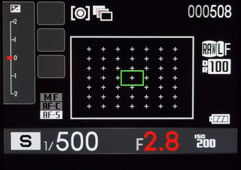 | 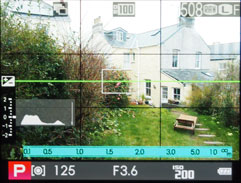 | 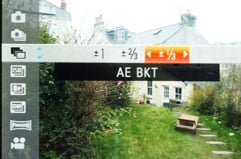 |
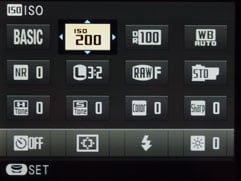 | 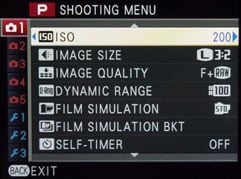 | 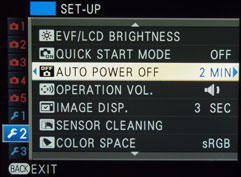 |
On other models this might result in too much reliance on menus, but there's a dial for pic recompense, a programmable subprogram clitoris, a dedicated Drive away mode button and a Q clit for all the else all important stuff. My only gripe here is that the self-timer options would exist better placed on the drive menu rather than, or As well as the Quick menu. Movie makers volition also hate that at that place's no dedicated movie record push button.
If you're torn between the X-In favor of 1 and the X-E1 and are worried that the latter might offer a less satisfactory manipulation get you needn't be; the two are virtually identical in terms of the physical moderate layout and menu process. About the alone significant difference is the ability to flip from lepton to optical viewfinders on the X-Pro 1 and if you're happy sounding through and through an EVF the X-E1's is in reality the best of the ii.
There are few irritating niggles on the treatment front. The X-E1's viewfinder provides an excellent see in most situations, and has an integral soft rubber environs that's comfortable, only doesn't do a great job of shielding it from extraneous light. I frequently found myself having to cover the top of the camera with my left to cause a fitter view. And secondly, even with the proximity sensor activated so that the view automatically switches between the LCD covert and the EVF, the image preview is displayed happening whichever was in utilisation when you took the shot. And then you can't photograph with the EVF, then get a quick 1.5 or 3 second base trailer on the LCD. For that you postulate to put up the preview time to continual.
Fujifilm X-E1 Autofocus
A great camera in many respects, the X-Pro 1 was gravely let down by its slow AF execution, so naturally with the reaching of the X-E1 the AF is one area that has attracted primary scrutiny. Fujifilm says the AF has been greatly better and claims AF speeds for the X-E1 of 0.1s when mated with the 18-55mm f2.8-4 kit lens.
As along the X-In favor of 1, three focussing modes are available, Lonesome AF, Round-the-clock AF and manual, selected using a switch on the front panel. From a handling perspective this is ideal incidentally, allowing you to switch focus modes victimisation your left over index finger without taking your eye from the view finder. Another good touch is that in manual mode you can activate the AF for 'Unrivaled-touch AF' by pressing the AF operate clitoris. There's no face detect or trailing AF though, which puts the X-E1 at a real disadvantage compared with models like the Canon EOS M and Olympus OM-D E-M5 and PEN models.
In practise, the X-E1's AF with the kit genus Lens is a big improvement on the original dismission of the X-Pro 1. In good lighting the reaction is straightaway and confident. In one case the light begins to fall it's to a lesser extent sure of itself, something that could be said of some other mirrorless models, but here it's a question of degree. The X-E1 slows down a little merely the break between press the shutter and AF responding is motionless only a short fraction of a second. The lost hunting back and forth that impaired the X-Pro 1 in low light is happily absent. That's a big improvement on some the X-Pro 1 and the Canon Eos M, both of which perform middling lamentably in akin conditions, simply it falls well short of the Best of the mirrorless AF performers from Olympus and Panasonic.
X-Pro 1 owners will be be pleased to know that in January 2013 Fujifilm released the Ver2.03 microcode update for the X-Pro 1 improving the AF accuracy under a change of conditions.
Fujifilm X-E1 Continuous shooting
Like the X-Pro 1, the Fujifilm X-E1 has two constant shot speeds: 3 and 6fps, and in both modes the focus and photo are locked on the first frame. To test the X-E1's incessant shot performance I fitted it with a recently formatted Sandisk Extreme Pro 16GB UHS-1 menu with a 95MB/s write accelerate. I set the X-E1 to shoot Okay quality JPEGs at the 6fps speed and with the ISO place to 200 and the shutter speed at 1/250 held the shutter consume. The X-E1 fired a burst of 16 frames at 5.7 frames per second, before stall and slowing appreciably.
With the superior set to RAW the X-E1 managed a burst of 12 shots before slowing to around 1fps. I timed the 12 barb burst at 5.7fps – on the dot the same as for the JPEGs, so the X-E1 manages close to its 6fps claimed top hie for both JPEGs and RAW files. To empty a full buffer takes about eight seconds for JPEGs and fourteen seconds for Stark naked files. You can bear on to shoot at a much slower rate once the buffer is filled but if you wait for a few seconds you can dissipate another short burst while the buffer constant to write.
6fps is middling in damage of round-the-clock shooting performance for a mirrorless camera. It's inactive compared with the 15fps at present offered aside the Nikon 1 system (with AF), 10fps NEX models, and 9fps for the OM-D E-M5. It does, however, beat the 4.7fps top race of the Canyon Eos M, with both models providing similar sized buffers.
One other point worth noting is that the X-Pro 1 has an vantage over the X-E1 and indeed other mirrorless models that rely on live view for continuous shot. You can follow the military action as information technology happens through the X-Pro 1's optical viewfinder, whereas with the X-E1 and all the others, you'atomic number 75 reduced to seeing the last human body shot, which makes following fast action moving subjects a large deal more tough.
Fujifilm X-E1
Sensor
The X-E1 uses the same 16 Megapixel X-Trans CMOS sensor developed for the X-In favou 1. The key difference between it and conventional sensors is the colour filter array. In a traditional digital camera sensor, each photo site is covered aside a coloured filter staged in a repeating pattern. The most common pattern uses a two-away-two square array with one red, one blue and two green filters; this is familiar as the Bayer pattern after the Kodak orchestrate who invented it. Software then interprets this information to bring fort a full colour image in a summons known as de-mosaicing.
The problem with the Bayer pattern is that very fine details seat drive unenviable colour artefacts known atomic number 3 moiré. The solution on time-honored television camera sensors is to slightly blur the ticket detail using a debased-pass percolate placed in nominal head of the sensor. This effectively reduces moiré, but at the toll of losing the finest details.
| Bayer radiation pattern: 2×2 | X-Trans pattern: 6×6 | ||
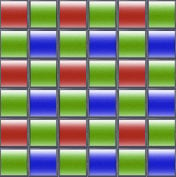 | 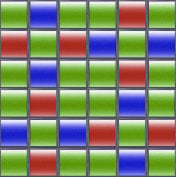 | ||
Fujifilm's X-Trans sensor claims to annul moiré by employing a different pattern of filters which to a greater extent nearly resembles the random nature of film grain. So instead of the handed-down two-by-two Acetylsalicylic acid pattern, the X-Trans sensor employs a six-away-sextet repeating pattern with a less regular transcription of coloured filters within. You put up see how this looks in the diagram opponent, reproduced from the Fujifilm brochure.
Fujifilm reckons this unweathered normal is so effective that moiré is reduced to an extent that eliminates the need for a low-pass filter altogether. This means the full resolution of the sensor is unlocked and the company claims the 16 Megapixel X-Trans leave compeer or even out-execute full-frame sensors.
The more complex rule does, however, require a more intensive de-mosaicing process to generate a full colour image, and to cope with the number-crunching, Fujifilm has well-appointed the X-E1 with its new EXR Processor Affirmative. A unexampled and complex pattern also necessarily Thomas More involved RAW processing, at the time of writing support for the X-Trans sensor's RAW files is slowly materialising with landscaped affirm in ACR 7.4 (currently in release prospect) besides as support from Catch One, and Corel PaintShop Pro X5.
Moving onto the actual photos, the X-Trans sensor delivers 3:2 shaped images with a upper limit firmness of purpose of 4896×3264 pixels. 16:9 and 1:1 cropped aspect ratios are also available, and apiece material body is additionally offered at two lower resolutions if desired. Images canful be recorded as JPEGs, RAW files or RAW plus JPEG. The sensitivity ranges from 200-6400 ISO and is expandable kill to 100 ISO and adequate to 25600 ISO. Auto ISO can be limited to a maximum of 400 to 3200 ISO.
The X-E1 is fitted with a mechanistic focal-plane shutter with a range of 30 seconds to 1/4000 and a swank synch speed of 1/180. The Bulb mode can digest exposures up to 60 minutes long, and once again you can use a flashy physical science cable release. Exposure compensation is available from +/-2EV and 3-frame bracketing in 0.3, 0.7 or 1EV increments.
To see how the quality of the Fujifilm X-E1 measures-up in rehearse, take a look at my Fujifilm X-E1 tone and Fujifilm X-E1 noise results pages, browse my Fujifilm X-E1 sample images, or skip to the chase and lead vertical for my verdict.
Pages: 1 2 3 4
Fujifilm X-E1 review
Source: https://www.cameralabs.com/fujifilm_x-e1/
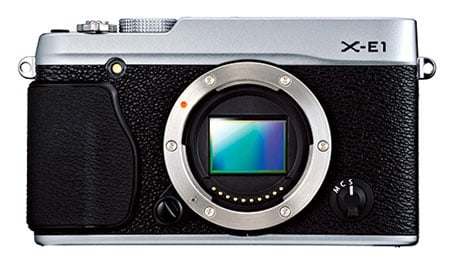
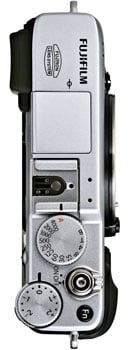



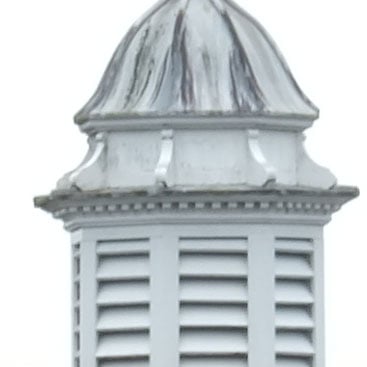

0 Komentar